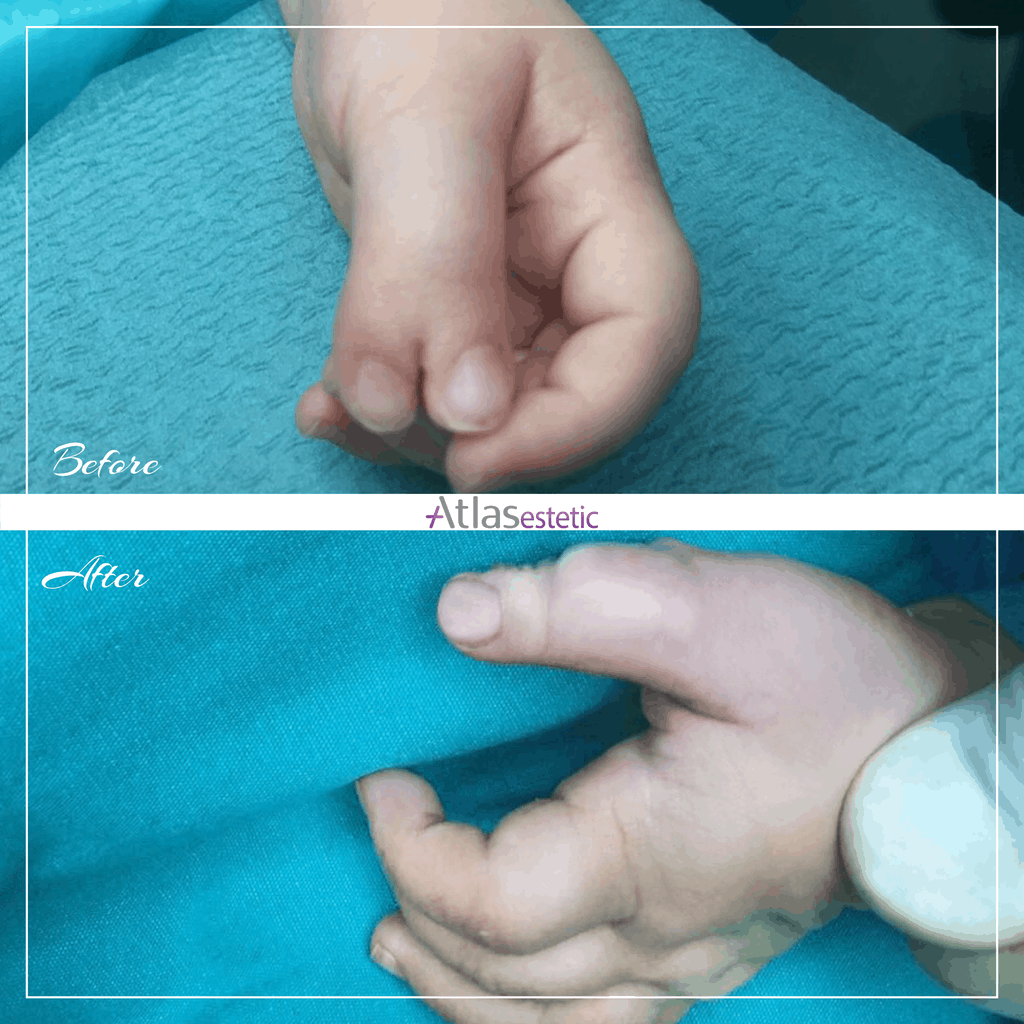What is polydactyly
Polydactyly is a congenital condition in which someone is born with one or more extra fingers on your arms or legs. This degeneration can usually occur on one or both hands or feet.
The very name comes from the Greek word “poly” (much) and “dactilos” (finger). In this case, extra fingers are described as “too much”, which means “more than normal number”.
Today, a wide range of treatments are available to remove this deformity, depending on the type of polydactyly, and the cause of this condition is often genetic.
How does polydactyly look like?
Polydactyly is completely visible to the naked eye, and the way it is presented can vary, so it can appear as:
- a small, elevated soft tissue bone, which does not contain bones (it is called nubbin)
- a partially formed finger containing some bones, but not joints
- fully functional finger with tissues, bones and joints
There are three main types of polydactyly:
Ulnar or postaxial polydactyly or small finger multiplication: This is the most common form of the condition, where the extra finger is on the outside of the small finger. This side of the hand is known as the ulnar side.
Radial or preaxial polydactyly or duplication of the thumb: This is less common, occurs in 1 in every 1,000 to 10,000 live-born babies. An extra finger is on the outside of the thumb. This side of the hand is known as the radial side.
Central polydactyly: This is a rare type of polydactyly. The additional finger is attached to the ring finger, middle finger or most often index finger.
What are the causes of polydactyly?
Polydactyly is a degeneration of the tissue that can be inherited. When it is inherited, it is known as family polydactyly. This form of polydactyly usually occurs in isolation, which means that a person does not have to have any symptoms.
Polydactyly may also be associated with a genetic condition or syndrome, which means it can be transmitted together with that genetic condition. If polydactyly is not transmitted, this is due to a change in the baby’s genes while in the womb.
Polydactyly-related disorders / diseases include:
- Syndactyly (interlaced hands or feet)
- Asphyxiating thoracic dystrophy
- Carpenter’s syndrome
- Ellis van Creveld syndrome (chondroectodermal dysplasia)
- Laurence-Moon-Biedl syndrome
- Rubinstein-Taibi syndrome
- Smith-Lemli-Opits syndrome
- Trisomy 13
The multiple number of small fingers is often inherited. In many cases, with African-Americans, for example, polydactylia is inherited from a specific dominant genome. For white people, for example, there is a greater likelihood of being associated with an existing genetic condition or a particular syndrome.
How to treat Polydactyly?
The treatment of polydactyly depends largely on the patient’s specific condition:
- Hyperdactyly of small finger
Hyperdactyly of small fingers may not require treatment, as this usually does not affect how people can use their hand. However, this operation may still be necessary for cosmetic reasons.
If the extra little finger is only partially formed and does not contain any bones, it can be easily removed.
A doctor can do this by tying a solid wire around the base of the extra finger. This interrupts the blood flow, which allows the excess tissue to naturally fall off. This procedure is often performed in the first year after birth.
If the extra little finger is fully formed or is functional, an operation may be necessary to remove it.
- Thumb duplication
Procedures for thumb removal are more complicated because an additional thumb may affect the function of another finger. For this reason, it may not be possible to simply remove an extra thumb.
Surgery may be required to reconstruct one functional thumb, using parts of both thumbs.
There are many different surgical options that are available depending on the position and phase of the additional injection.
- Central polydactyly
There are some surgical options for central polydactyly which include:
- retention of an additional central finger, but surgery on the tendons and ligaments to avoid deformities
- removing the extra central finger and reconstruction of the one to which it is attached
- removing both fingers and reconstruction of one new finger
Possible complications
Complications of this surgery are rare, but may include:
- the risk of infection
- sensitive lumps where the finger or nubbin is removed
- limited movement of the reconstructed finger
Treatment of polydactyly in Atlas general hospital
Specialist exams and consultations with experienced doctors Atlas General Hospital will certainly give you a better insight into the specific condition of polydactyly, where you will be thoroughly informed of all the available ways this finger deformity can be treated. A team of cosmetic surgeons at the Atlas Clinic is successfully solving this aesthetic problem.
You could call our call center’s phone and schedule the appointment: +381 11 785 88 88.

